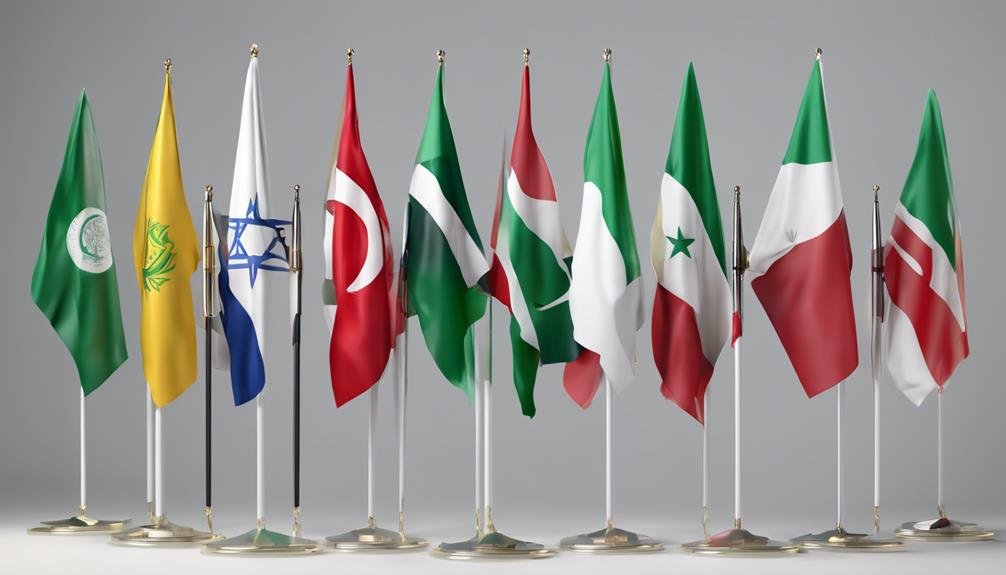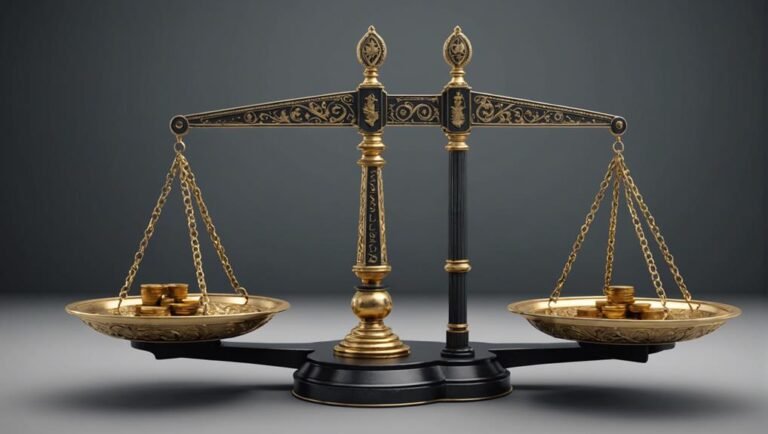Arab League
The Arab League, a regional organization aimed at fostering cooperation and unity among Arab nations, has been a significant player in shaping the political landscape of the Middle East. From its establishment in 1945 to its current role in addressing contemporary challenges, the League's influence extends beyond its member states. However, recent developments within the organization have sparked debates and raised questions about its effectiveness and relevance in a rapidly changing geopolitical environment. This prompts a closer look at the Arab League's evolving dynamics and its potential impact on regional dynamics and global affairs.
Key Takeaways
- Established in Cairo in 1945 to promote regional cooperation.
- Comprises 22 member states and 4 observer nations.
- Plays a key role in advocating for reforms and stability.
- Overseen by a Secretary-General to implement the charter.
- Faces challenges such as internal divisions and potential dissolution.
Establishment and Mission
The Arab League, established in Cairo in 1945, was founded with the mission to promote independence, sovereignty, and common interests among its member states in the Middle East and North Africa. The League's establishment history reflects a desire for regional cooperation to address shared challenges and opportunities.
Through fostering collaboration among Arabic-speaking nations, the Arab League aims to strengthen ties, enhance economic growth, and guarantee political stability in the region. By providing a platform for dialogue and joint action, the League plays a pivotal role in addressing regional issues and advancing mutual interests.
Its commitment to promoting unity and cooperation underscores the importance of collective efforts in achieving prosperity and peace in the Middle East and North Africa.
Member States and Observers
Consisting mainly of Muslim and Arabic-speaking nations in the Middle East and North Africa, the Arab League comprises 22 member states and 4 observer nations.
The membership diversity within the League includes countries with varying population sizes, wealth levels, GDPs, and literacy rates.
The 4 observer nations – Brazil, Eritrea, India, and Venezuela – contribute to the League's discussions and activities, despite not having full membership status.
These observer nations offer unique perspectives and insights, adding to the richness of the Arab League's dialogue and initiatives.
While the member states form the core of the League, the observer nations play a valuable role in enhancing cooperation, understanding, and collaboration within the organization.
Historical Significance and Actions
In the annals of international relations, the Arab League's historical trajectory is marked by pivotal actions that have shaped regional dynamics and global perceptions. Particularly remarkable was the Arab League's response during the Arab Spring uprisings in 2011. The organization played a decisive role in addressing the socio-political upheavals in several member states, advocating for reforms and stability.
Additionally, the Arab League condemned the Islamic State in 2014, demonstrating a unified stance against terrorism in the region. By actively engaging in these significant events, the Arab League showcased its commitment to promoting peace, security, and cooperation among its member states, solidifying its position as a key player in the Middle East and North Africa region.
Charter and Leadership Structure
How does the Arab League's charter structure and leadership composition contribute to its effectiveness in achieving its stated objectives?
The Arab League's charter, established in 1945, outlines the framework for cooperation and coordination among its member states. With 20 articles and 3 annexes, the charter aims to strengthen ties and reinforce sovereignty within the Arab world.
Central to the League's operations is the role of the Secretary-General, currently held by Ahmed Aboul Gheit, who oversees the implementation of the charter and plays a pivotal role in the organization's leadership. The Secretary-General is instrumental in ensuring the effective functioning of the League and in advancing its mission of promoting trade, economic growth, and stability in the Middle East and North Africa.
Current Challenges and Controversies
Amidst shifting dynamics and internal discord among member nations, the Arab League faces a series of complex challenges and controversies that test its unity and effectiveness in the pursuit of its objectives. Internal divisions within the League have contributed to its paralysis, with some members showing waning enthusiasm by skipping summits. This disunity hampers the organization's ability to address pressing regional issues effectively. Additionally, there have been suggestions about the potential future dissolution of the Arab League due to these internal rifts. Turkey's denied observer status and conflicts with some League members further exacerbate the challenges the organization faces. While not a military alliance, the League cooperates in military affairs, focusing on peacekeeping and defense coordination.
| Challenges and Controversies | ||
|---|---|---|
| Internal divisions | League's paralysis | Disunity |
| Future dissolution | Waning enthusiasm | Potential rifts |
| Denied observer status | Conflict exacerbation | Military affairs |
Conclusion
In closing, the Arab League, established in 1945, serves as an essential platform for promoting unity and cooperation among its member states and observers.
Despite facing challenges and controversies, the League continues to play a significant role in advocating for peace, security, and economic development in the Arab world.
An interesting statistic to note is that the Arab League has conducted over 1,000 meetings since its inception, highlighting its commitment to addressing regional issues through diplomatic means.







